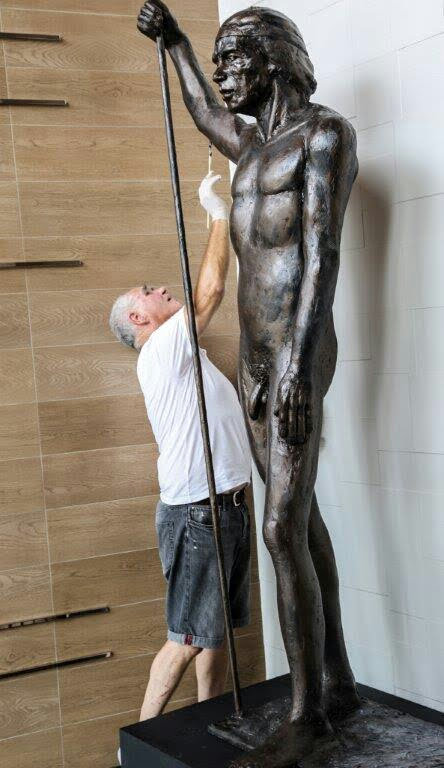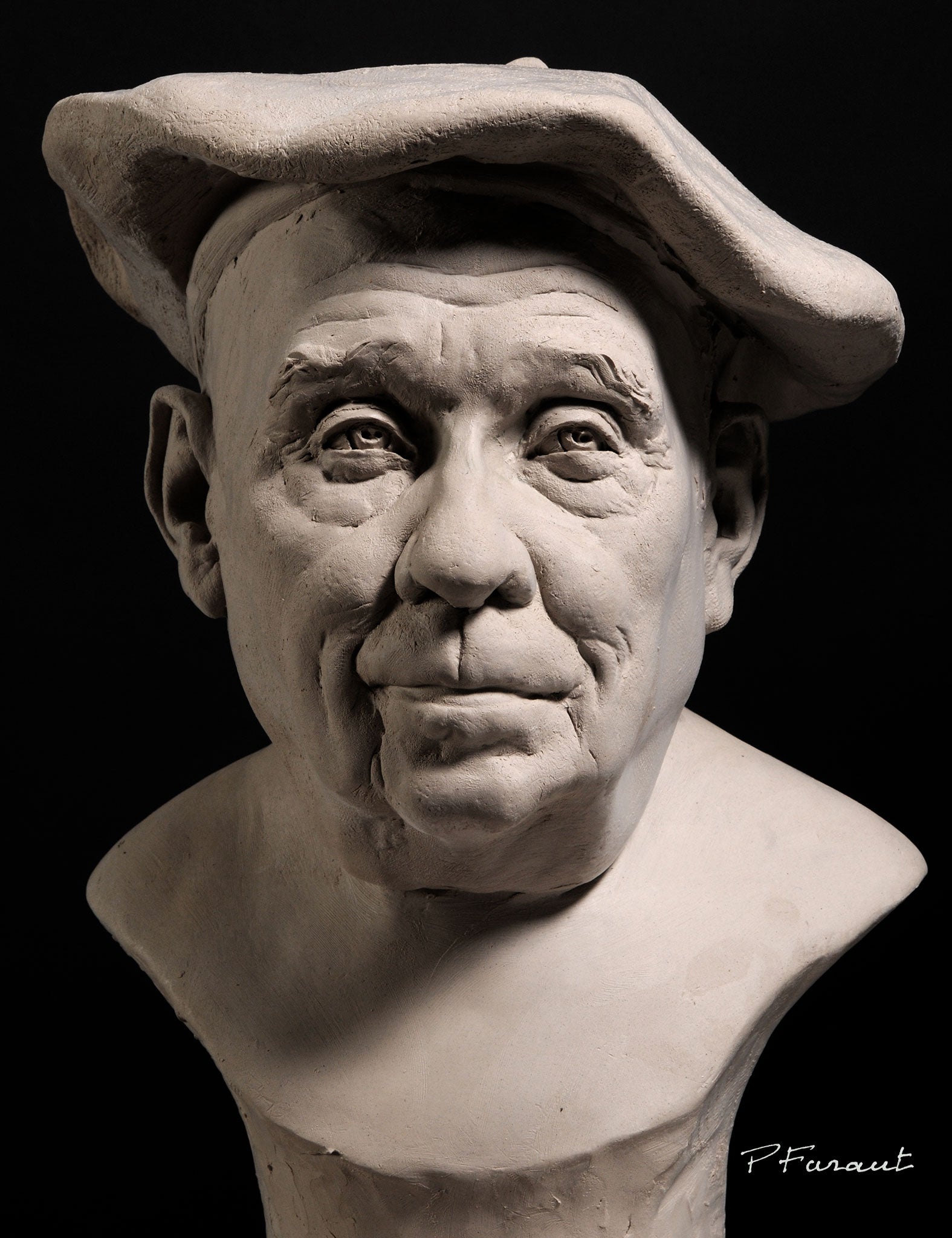Elegance moving: Discover the Elegance of Equine Sculptures
Wiki Article
The Evolution of Sculptures: From Old to Modern
The Advancement of Sculptures: From Ancient to Modern. Contemporary Sculptures.Sculpture, one of the earliest forms of art, has actually been an indispensable part of human people for millennia. From the ancient worlds of Egypt and Greece to the contemporary age, sculptures have actually evolved, mirroring adjustments in artistic strategies, materials, and cultural influences. This journey via time traces the development of sculptures, discovering the shifts in design, subject, and creative expression.
Starting with the ancient world, sculptures crafted from rock and later on bronze captured the essence of divine beings, rulers, and daily life. The Renaissance duration experienced a revival of classic sculpting strategies, as artists looked for to imitate the graceful forms of ancient Greek and Roman sculptures (Portrait Sculptor). In the modern age, musicians challenged traditional limits, accepting abstraction and testing with brand-new products
This expedition will look into the diverse advancement of sculptures, exposing the rich tapestry of imaginative expression across different periods and cultures.

Ancient Sculptures: From Rock to Bronze
Ancient sculptures transitioned from being sculpted out of rock to being cast in bronze. Rock sculptures, while excellent in their own right, were restricted by the nature of the product. Equine Sculptures.The intro of bronze as a medium for sculptures produced a transformation in imaginative expression. Bronze used artists the chance to develop intricate and natural kinds that were not feasible with rock. The procedure of casting bronze permitted the development of several copies of a sculpture, enabling bigger distribution and conservation of these artistic masterpieces.
The shift from stone to bronze likewise saw a shift in the subject matter of sculptures. While rock sculptures mostly depicted gods, goddesses, and mythical figures, bronze sculptures started to mirror a broader series of subjects, including daily individuals and pets. This development of topic showcased the convenience and versatility of the bronze medium.
Renaissance Rebirth: Forming in the Classic Design
The Renaissance resurgence of sculpture experienced a revival in the classical design, structure upon the improvements made throughout the shift from stone to bronze in ancient sculptures. Throughout this duration, musicians looked for to recreate the classical visual and ideals of elegance that were common in ancient Greek and Roman sculptures.One of the crucial characteristics of the Renaissance rebirth was the focus on naturalism and the human form. Carvers like Donatello and Michelangelo strove to capture the physiological details and expressions of their subjects with unprecedented precision. They researched the body and integrated their monitorings into their sculptures, causing sensible and lifelike representations.
An additional important aspect of the Renaissance rebirth was the exploration of point of view and deepness. Musicians used strategies such as contrapposto, where the weight of the body is changed away, developing a feeling of movement and dynamism. They likewise explored with different products, consisting of marble and bronze, to attain a level of sophistication and complexity in their sculptures.

Modernism and the Avant-Garde: Breaking Conventional Limits
Throughout the Modernism and Avant-Garde motions, carvers pressed the borders of conventional artistic conventions. This duration, which arised in the late 19th and very early 20th centuries, saw a remarkable change in the method musicians came close to sculpture. Rejecting the idea of art as mere imitation, modernist sculptors sought to check out brand-new forms, products, and principles.
One of the vital characteristics of modernist sculpture was the focus on abstraction. Artists moved away from reasonable representations and rather concentrated on recording the significance of the topic with streamlined kinds and geometric forms. This separation from conventional representation permitted artists to express their emotions and ideas in an extra individual and subjective way.

Contemporary Sculptures: Checking Out New Products and Concepts
With an emphasis on checking out brand-new materials and principles, modern sculptures have transformed the field of art. Artists today are pressing the boundaries of typical sculpture by making use of ingenious products and exploring with abstract principles. These sculptures challenge traditional notions of kind, materiality, and definition, inviting viewers to engage in a thought-provoking and brand-new artistic experience.Contemporary carvers are accepting a large variety of materials, including plastic, glass, steel, and also organic matter. They are not limited to the typical medium of rock or clay, enabling higher freedom of speech and trial and error. This shift in the direction of unconventional products has opened brand-new possibilities for musicians to create sculptures that are dynamic, interactive, and aesthetically striking.
Along with checking out new products, modern sculptures also explore complicated and abstract principles. Artists are currently checking out motifs such as identification, social issues, and the environment, utilizing sculpture as a powerful medium for social commentary and self-contemplation. These sculptures test viewers to believe critically and involve with art on a much deeper level, triggering conversations and provoking psychological actions.
Global Influences: Sculptural Practices From All Over The World
Sculptural practices from different areas of the world have considerably shaped the development of sculptures throughout history. The international impacts on sculpture have been diverse and have added to the richness and variety of creative expressions. From the old worlds of Egypt, Greece, and Rome to the detailed makings of Oriental cultures, each region has actually created its one-of-a-kind sculptural customs that have affected musicians across time.In old Egypt, sculptures were produced primarily for funerary and spiritual functions. The legendary sculptures of pharaohs and gods, such as the Great Sphinx and the bust of Queen Nefertiti, showcase the Egyptians' mastery of rock sculpting and their belief in the immortality.

In ancient Rome, sculpture served both political and imaginative functions. Roman sculptures commonly depicted emperors, generals, and mythical figures, reflecting the power and magnificence of the realm. The marble statue of Augustus of Prima Porta and the huge Arc of Constantine are noteworthy examples of Roman sculptural accomplishments.
Oriental sculptural traditions, especially in India, China, and Japan, have also had a profound influence on the development of sculptures. Indian sculptures, such as the elaborately carved temples of Khajuraho and the gigantic sculptures of Buddha, exhibit an abundant blend of religious, mythological, and building elements. Chinese sculptures, identified by their great craftsmanship and interest to detail, often depict divine beings, animals, and fabulous numbers. Japanese sculptures, affected by Buddhism, stress simpleness and tranquility, seen in the tranquil statuaries of Buddha and the classy art of bonsai.
The worldwide influences on sculpture proceed to develop in the modern period. Musicians today draw motivation from various sculptural practices, integrating brand-new products, strategies, and ideas to develop ingenious and thought-provoking artworks. The combination of different social impacts has actually provided surge to a vibrant and diverse sculptural landscape, reflecting the interconnectedness of our global culture. As we seek to the future, it is particular that the worldwide influences on sculpture will continue to shape and redefine this old art form.
Final Thought
Finally, the evolution of sculptures has seen a shift from old stone and bronze functions to the classic revival during the Renaissance. This was followed by the breaking of traditional limits with innovation and the avant-garde motion. Today, modern sculptures explore brand-new products and concepts, while additionally drawing motivation from worldwide sculptural customs. The trip of sculptures shows the ever-changing creative expressions and social influences throughout background.From the old people of Egypt and Greece to the modern-day period, sculptures have actually progressed, reflecting modifications in Click Here artistic techniques, materials, and social impacts.Starting with the ancient globe, sculptures crafted from stone and later bronze recorded the significance of deities, leaders, and everyday life.Ancient sculptures transitioned from being carved out of rock to being cast in bronze. While stone sculptures predominantly shown gods, sirens, and mythical figures, bronze sculptures began to reflect a more comprehensive array of topics, consisting of everyday people and animals.In verdict, the evolution of sculptures has seen a change from ancient stone and bronze functions to the classic resurgence throughout the Renaissance.
Report this wiki page